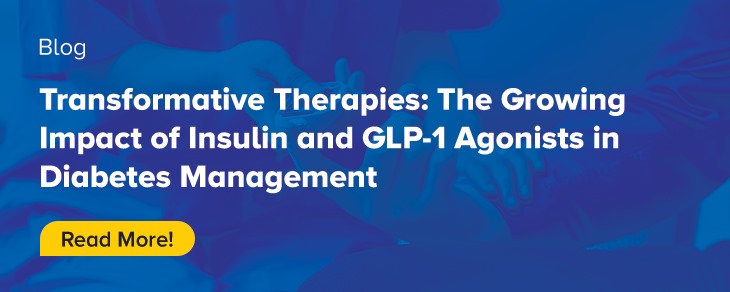
Diabetes Mellitus is not just a health condition; it’s a global crisis affecting millions. This chronic condition, marked by elevated blood sugar levels, manifests in two primary forms: Type 1 and Type 2 Diabetes. While they share common symptoms, their underlying causes and management strategies differ.
Type 1 Diabetes is an autoimmune disorder where the body’s immune system mistakenly attacks and destroys Insulin-producing cells in the pancreas. As a result, the body can no longer produce Insulin, the hormone necessary for regulating blood sugar. People with Type 1 Diabetes require lifelong Insulin therapy to survive, as the body cannot manage blood sugar levels on its own.
Type 2 Diabetes, on the other hand, is primarily a metabolic disorder. It occurs when the body either becomes resistant to Insulin’s effects or doesn’t produce enough Insulin to maintain normal glucose levels. Type 2 Diabetes is the more prevalent form, accounting for approximately 90% of all diabetes cases. It is closely linked to lifestyle factors such as diet, physical inactivity, and obesity.
Rising Rates of Type 2 Diabetes
In 2021, an alarming 537 million adults globally were living with diabetes—a figure expected to rise to 783 million by 2045. The severity of Type 2 Diabetes cannot be overstated, as it is a leading cause of severe complications such as heart disease, stroke, kidney failure, and nerve damage. Furthermore, 541 million adults are at increased risk of developing Type 2 Diabetes, highlighting the urgent need for effective management and innovative treatment strategies.
Current Market Trends Driving Medication and Treatments for Diabetes Management
The Expanding Market for Diabetes Medications
The market for Type 1 & Type 2 has seen substantial growth, fuelled by the increasing prevalence of the disease and the continuous introduction of novel therapeutic options. As of 2023, global sales are expected to reach a staggering $67.7 billion, with the United States alone accounting for $38.8 billion. The growth is driven by several factors, including therapeutic innovation and the introduction of advanced diabetes therapeutics. The need for better glycemic control, combined with the demand for minimally invasive treatment options, has propelled this market forward.
Insulin: A Pivotal Medication for Diabetes Treatment
Diabetes Management primarily revolves around controlling blood sugar levels through lifestyle changes, regular monitoring, and medication. For many, Insulin therapy is crucial. Insulin, a hormone that facilitates the absorption of glucose into cells, remains a cornerstone in diabetes management. Various forms of Insulin, including rapid-acting, short-acting, intermediate-acting, and long-acting Insulin, are tailored to meet individual needs. Innovations such as Insulin pens, pumps, and hybrid closed-loop systems have made Insulin therapy more accessible and effective
The global Insulin market is poised for significant growth with its size expected to increase from USD 23.1 billion in 2022 to approximately USD 83.04 billion by 2032, driven by a compound annual growth rate (CAGR) of 13.70% during the forecast period. This growth is largely fuelled by continuous advancements in Insulin delivery methods, such as Insulin pumps, smart pens, and patch pumps, which have enhanced patient convenience and adherence to treatment regimens. These innovations not only improve the patient experience but also create opportunities for market expansion and diversification, making Insulin therapy more accessible and effective for a broader population.
Additionally, the introduction of Insulin analogues has revolutionized diabetes management by more closely mimicking normal human physiology. These analogues, particularly basal Insulin analogs like Insulin detemir and Insulin glargine, offer numerous benefits, including less variability, longer duration of action, and reduced risk of hypoglycemia, especially at night. Despite their higher cost, the utilization of long-acting Insulin analogues has been on the rise, particularly in US & Europe, due to their superior pharmacokinetic profiles and overall efficacy in managing diabetes.
GLP-1 Receptor Agonists: A Game Changer in Diabetes Management
The GLP-1 receptor agonist market is experiencing rapid growth, driven primarily by the increasing prevalence of diabetes and obesity worldwide. These medications work by stimulating the release of Insulin in response to food intake, thereby improving glycemic control. These drugs have become a preferred choice for managing these conditions due to their high efficacy, especially in controlling blood sugar levels and promoting weight loss, with a lower risk of hypoglycemia compared to other diabetes medications. The market is projected to rise significantly, with a compound annual growth rate (CAGR) of 11.7%, reaching an estimated value of US$ 72,127.79 million by 2034. This growth is also supported by extensive clinical research, which has consistently demonstrated the safety and effectiveness of GLP-1 receptor agonists in achieving positive outcomes in glycemic control, cardiovascular risk reduction, and weight management.
Regulatory bodies are increasingly recognizing the value of real-world evidence (RWE) in complementing traditional clinical trial data, further propelling the growth of the GLP-1 receptor agonist market. RWE, obtained from observational studies, electronic health records, and patient registries, plays a vital role in post-marketing surveillance. It provides a more comprehensive understanding of the long-term safety, efficacy, and usage patterns of these drugs in real-world clinical settings. This shift towards RWE-driven insights is helping regulatory agencies make more informed decisions, reinforcing the importance of GLP-1 receptor agonists in managing diabetes and obesity in a broader, real-world context.
Currently, there are seven GLP-1 receptor agonists available, including Semaglutide, Liraglutide, Exenatide, Lixisenatide, Dulaglutide, and Oral Semaglutide.
The Role of Oral Anti-Diabetic Drugs
Oral anti-diabetic drugs remain the most widely used treatment, particularly in cases where lifestyle modifications alone are insufficient. These drugs are often the first line of defense, offering a convenient and non-invasive option for patients. The FDA’s encouragement of new therapeutic options further underscores the importance of these drugs in diabetes management.
As a result, the market is projected to grow from an estimated USD 46.82 billion in 2024 to USD 57.44 billion by 2029, at a compound annual growth rate (CAGR) of 4.17%. The increasing demand for oral anti-diabetic drugs, combined with the introduction of newer-generation medications, is driving this growth globally.
The Asia-Pacific region, in particular, is expected to register strong market growth, with a CAGR of more than 4% during the forecast period. Countries like China and Japan are recognized as key markets due to the rapid increase in diabetes cases. In 2021, the International Diabetes Federation reported that 90 million adults in the South-East Asia Region and 206 million adults in the Western Pacific Region were living with diabetes, with these numbers expected to rise significantly by 2030. New-generation oral drugs, such as DPP-4 inhibitors and SGLT-2 inhibitors, are gaining traction in these regions, as they have shown the ability to reduce cardiovascular risks in diabetic patients, further driving demand.
Leading pharmaceutical companies are experiencing intensified competition from regional manufacturers, which is contributing to a dynamic and evolving market landscape in Asia. The expanding diabetic population and the growing availability of generics are expected to sustain the growth of the oral anti-diabetic drug market in the coming years.
Technological Advancements in Diabetes Treatment
Technological innovation in diabetes devices, such as Insulin pumps and pens, is also contributing to market growth. These advancements offer patients more precise control over their blood sugar levels, reducing the risk of complications. The integration of digital technology with diabetes management tools is creating new opportunities for patient engagement and personalized treatment plans.
Distribution Channels: The Growing Influence of E-Commerce
Hospital pharmacies have traditionally dominated the distribution of diabetes medications, thanks to their role in providing primary care and their access to trained medical staff. However, the rise of online pharmacies is reshaping the landscape. The convenience of online shopping, coupled with attractive discounts, has made e-commerce a promising segment for diabetes drug distribution. This shift is further accelerated by the COVID-19 pandemic, which has increased patient awareness and acceptance of online pharmacies.
Veeda Group: Trusted Partner for Developing Insulin and GLP-1 Agonists
As the landscape of diabetes management rapidly evolves, new medications and treatment options are offering hope to millions of people around the world. From insulin therapies and GLP-1 receptor agonists to cutting-edge oral anti-diabetic drugs, the growing range of available treatments is leading to more personalized and effective solutions for patients.
At Veeda Group, we are proud to play a key role in this progress. As an integrated CRO supporting end-to-end drug development, we leverage our extensive expertise to support the development and delivery of life-changing diabetes treatments. Notably, Veeda Group has conducted 12 Insulin studies—including Insulin Wosulin, Glargine, and Aspart—as well as GLP-1 studies focusing on Liraglutide and Semaglutide.
We are fully committed to driving innovation and improving outcomes for patients globally as we continue to advance the field of diabetes management.
Sources:
- https://www.precedenceresearch.com/diabetes-drug-market
- https://www.msdmanuals.com/en-in/home/hormonal-and-metabolic-disorders/diabetes-mellitus-dm-and-disorders-of-blood-sugar-metabolism/medication-treatment-of-diabetes-mellitus#Insulin-Replacement-Therapy_v25185070
- https://www.mordorintelligence.com/industry-reports/oral-anti-diabetic-drug-market
- https://www.futuremarketinsights.com/reports/glp-1-receptor-agonist-market#:~:text=GLP%2D1%20Receptor%20Agonist%20Market%20Outlook%20for%202024%20to%202034,during%20the%20market%20forecast%20period.
- https://www.grandviewresearch.com/industry-analysis/glp-1-receptor-agonist-market
- https://worlddiabetesday.org/about/facts-figures/#:~:text=537%20million%20adults%20(1%20in,majority%20have%20type%202%20diabetes
- https://www.precedenceresearch.com/Insulin-market#:~:text=Insulin%20Market%20Size%2C%20Share%2C%20and%20Trends%202024%20to%202034&text=The%20global%20Insulin%20market%20size,period%20from%202023%20to%202032

